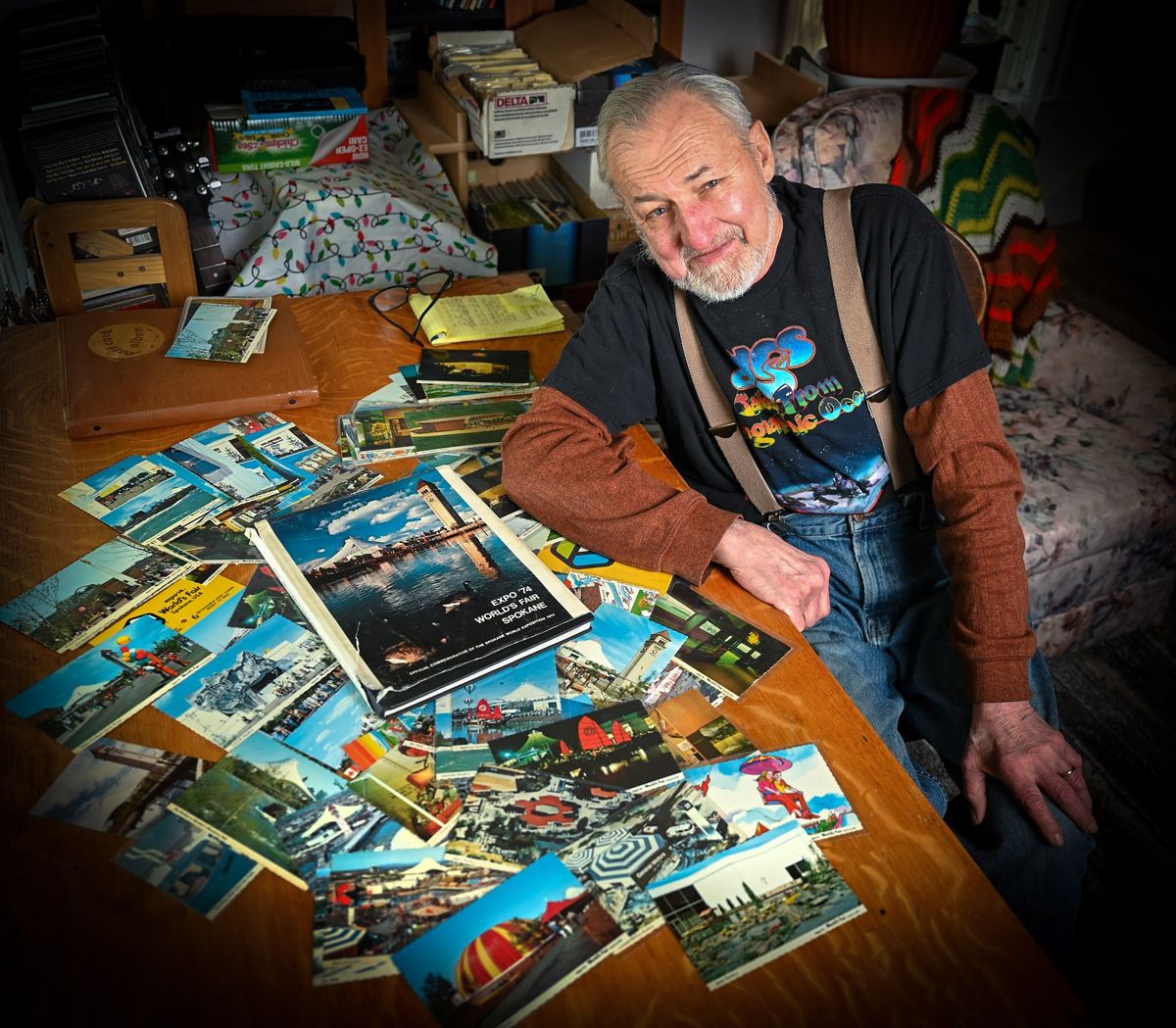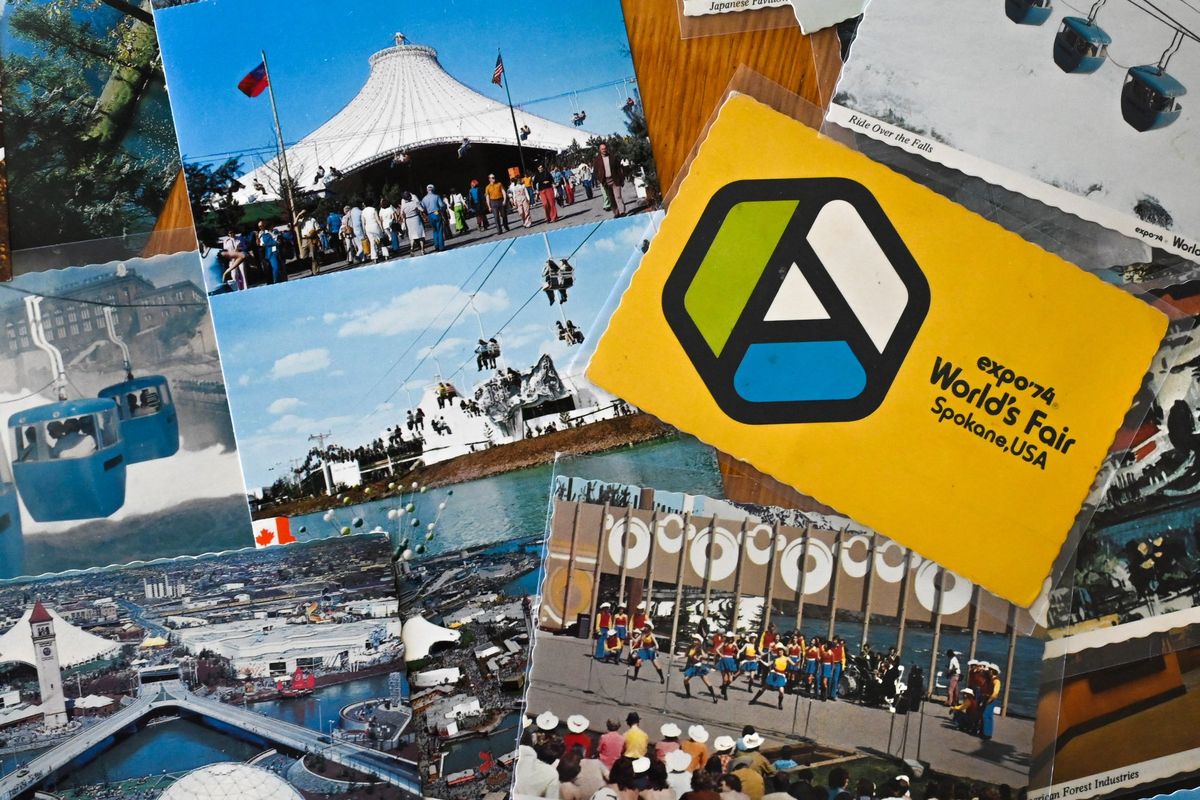The Collector: Expo ’74 postcard collection shows pieces of World Fair history
Jerry Smith, of Spokane, has collected 116 unique postcards depicting Expo '74. (DAN PELLE/THE SPOKESMAN-REVIEW)
Jerry Smith missed Expo ’74 by four years.
He and his wife moved to Spokane from Minneapolis in 1978. But his collection of 116 unique Expo postcards allows him to visit the World’s Fair from the comfort of his armchair.
“I started collecting postcards on my honeymoon in 1977,” he said. “We went to Glacier and Yellowstone, and I got postcards everywhere we went.”
He kept collecting when they returned.
“I’d go to antique stores and swap meets and buy them for a nickel a card.”
Soon, he had subcollections including Victorian homes, railroads, holidays and Expo ’74. The cards fill multiple boxes in his North Spokane home. He hasn’t counted them but estimates he has at least 10,000.
“Every picture tells a story,” he said.
Though he never visited the World’s Fair, his brother-in-law sent him an Expo ‘74 postcard. But his brother-in-law didn’t make it to the fair, either.
“He came in on the rails and got a room at the Paul Bunyan Motel,” Smith said. “People told him to go to People’s Park, so he did and got harassed by hippies.”
Smith said that was enough for his brother-in-law, who hopped on a train back to Minneapolis without attending the big event.
“I said to him, ‘Jim! That’s the World’s Fair!’” Smith recalled.
He still has that postcard, but it’s the only one from the Expo that’s stamped and dated. His World’s Fair collection got a boost when he came across a box of postcards at a local shop.
“It was all Expo ‘74 cards!”
Last week, while sorting through stacks of them, he pointed out ones that caught his eye.
Cards featuring the fair’s logo—the Mobius Strip, are among his favorites, as are those of the Gondola ride (now the Sky Ride) that transported sightseers across the falls.
Smith picked up a postcard with the caption “A Thrilling Ride over the Falls.” A toddler’s profile is framed in the window of the once sky-blue gondola.
Other notables include:
• A shot of a group called the Young Canadians, wearing blue, red and yellow, performing at the Boeing International Amphitheatre.
• A photo of the massive Soviet Pavilion featuring a 4,500-pound aluminum relief map of the USSR.
• The red and yellow-domed Kodak “Bubble” Theater.
• Teepees and Native Americans clad in traditional garb with the large red butterfly in the background — one of five such butterflies that served as landmarks during the Exposition.
• An artist’s rendering of the umbrella-topped chair lifts that took visitors from one end of the park to the other.
What’s fun for Smith is that the postcards include interior shots of the various pavilions as well as stunning exterior photos. He can view the surreal trees within the Russian pavilion or contemplate the peaceful garden space of the Japan pavilion.
Each card features the Fair’s logo and is marked “Official Expo ’74 World’s Fair Card.” They also include this paragraph, “’Celebrating tomorrow’s fresh new environment.’ Glistening islands and riverbanks of the Spokane River, open spaces with colorful plazas, dancing fountains, gardens and greenery, and many worldwide pavilions and exhibits. All created to illustrate that Man can live, work and play in harmony with his environment.”
“How the hell did Spokane land a World’s Fair?” Smith said, shaking his head. “It’s an amazing part of Spokane history.”
He doesn’t just collect postcards—he uses them to stay in touch with folks. However, Smith said it used to be a lot less expensive.
“Stamps are now 49 cents,” he said.
And gone are the days when he paid 5-25 cents for additions to his collection. Nowadays, postcards cost $3-$15.
“Every year, I send vintage postcards to friends and family,” he said. “People look forward to receiving them. I kind of make mail fun!”
As the city prepares to commemorate the Fair’s 50th anniversary, Smith has been doing his part to mark the occasion.
“In two weeks, I’ve given more than 20 (Expo postcards) away because it’s the 50th anniversary.”
He hastened to add that he’s only giving away his duplicates.
“To me, it’s still the World’s Fair when you go to the park,” said Smith. “There’s never been anything else like it.”


